
Gary Greenberg combines his passion for art and science by creating dramatic landscapes of hidden worlds.
The secrets of nature are visible everywhere. Yet, they remain secrets until they are revealed. Greenberg has been using his special microscopes to create spectacular landscapes of worlds beyond our everyday perception - worlds where reality is seen as abstract form and color, motion and texture.
For Greenberg, art is a doorway through which we can more deeply embrace nature. His mission is to reveal the secret beauty of the microscopic landscape that makes up our everyday world.
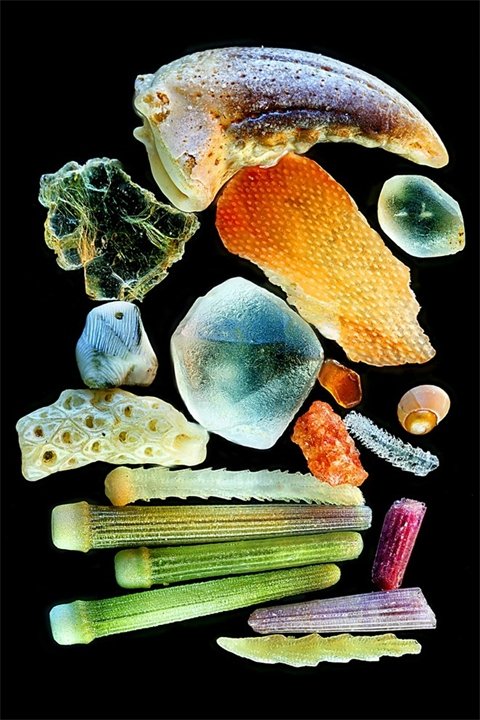
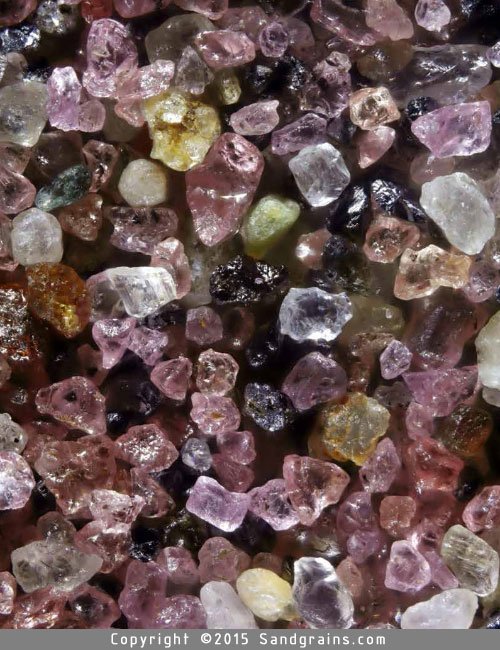
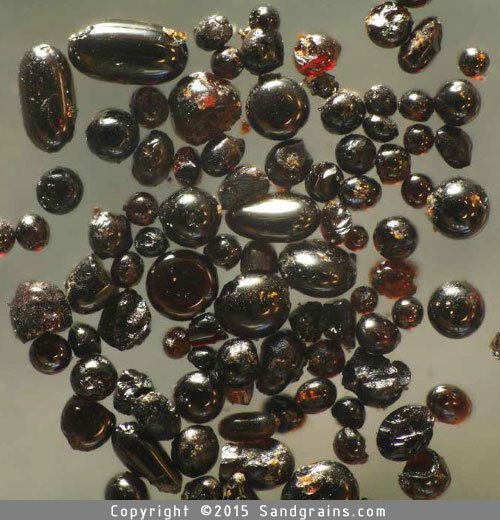
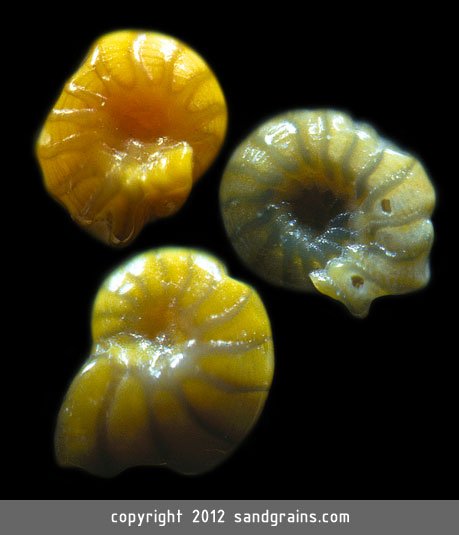

(ERODED QUARTZ CRYSTAL) These tiny grains of sand have eroded over hundreds of millions of years and their original crystal shape is not longer seen (magnified 100 times).
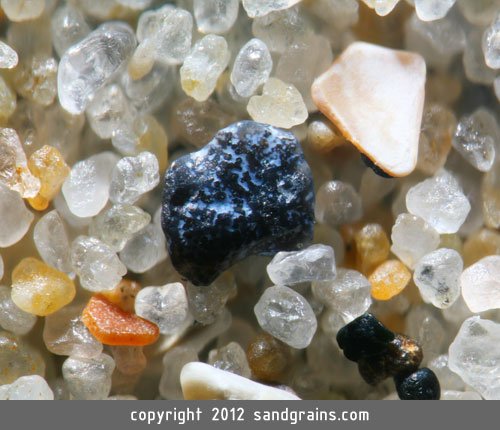
(BELGIAN SAND) A piece of industrial slag becomes a black and blue sand grain on a quartz beach in Belgium (magnification 100 times)
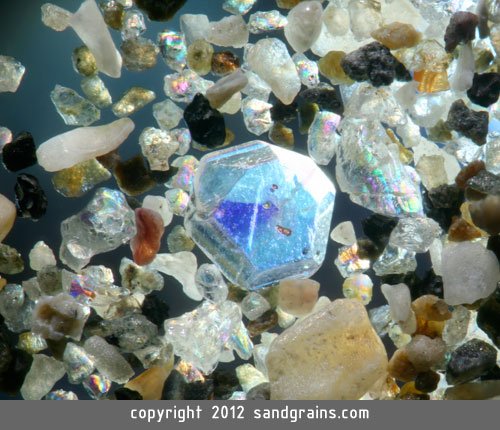
(A TINY SAPPHIRE) Sand from Japan contains what looks like a sapphire crystal (magnified 150 times)
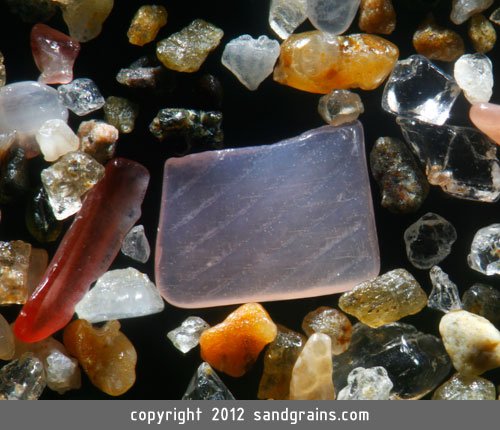
(SQUARE SAND) A square-shaped shell fragment is found amidst sand from Masaya, Nicaragua (magnification 80 times)
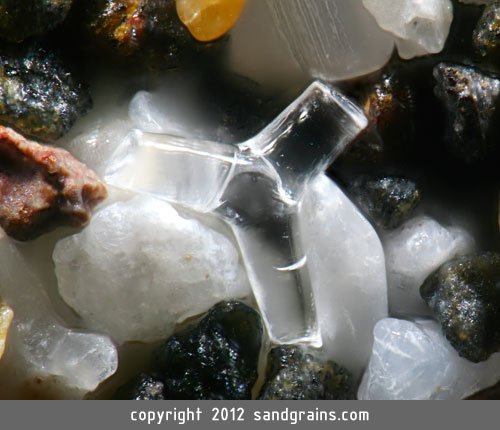
(HAMOA SPONGE SPICULE) Sand from Hamoa Beach, Maui, Hawaii, contains a fragment of a sponge spicule that forms the internal skeleton of a glassy sponge (magnified 100 times).
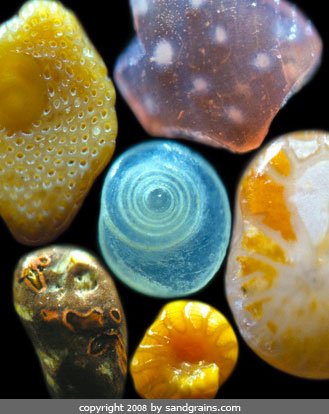
(BLUE, ORANGE & PINK SAND GRAINS) The tip of a spiral shell has broken off and become a grain of sand. After being repeatedly tumbled by action of the surf this spiral sand grain has become opalescent in character. It is surrounded by bits of coral, shell, and volcanic material.
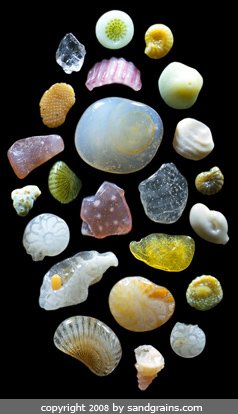
(HAWAIIAN SAND GRAINS ARRANGEMENT) Maui sand grains arrangement shows the diversity of sand grains from a thimble-full of sand from a single beach near Lahaina.
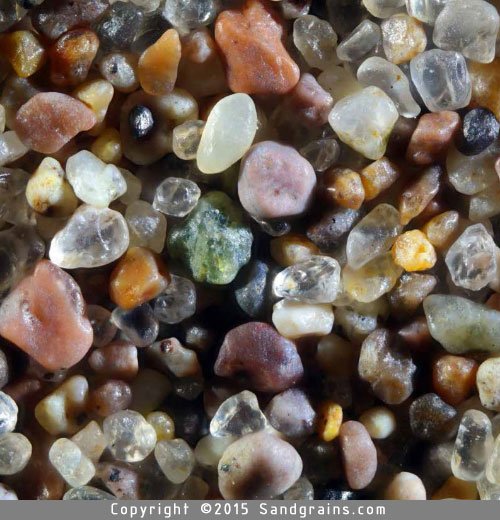
Colorado’s spectacular Great Sand Dunes are the highest sand dunes in North America at around 750 feet. This pretty sand contains a variety of sediments blown from the old flood plain of the Rio Grande River and sediments that have eroded from the nearby mountains. Minerals identifiable in this photograph include the clear quartz crystal (near center), the caramel-colored feldspar grain with the ninety-degree angles, and the two pink, angled-to-rounded garnet grains. Magnified
It would be good to invite Dr. Greenberg to steemit!